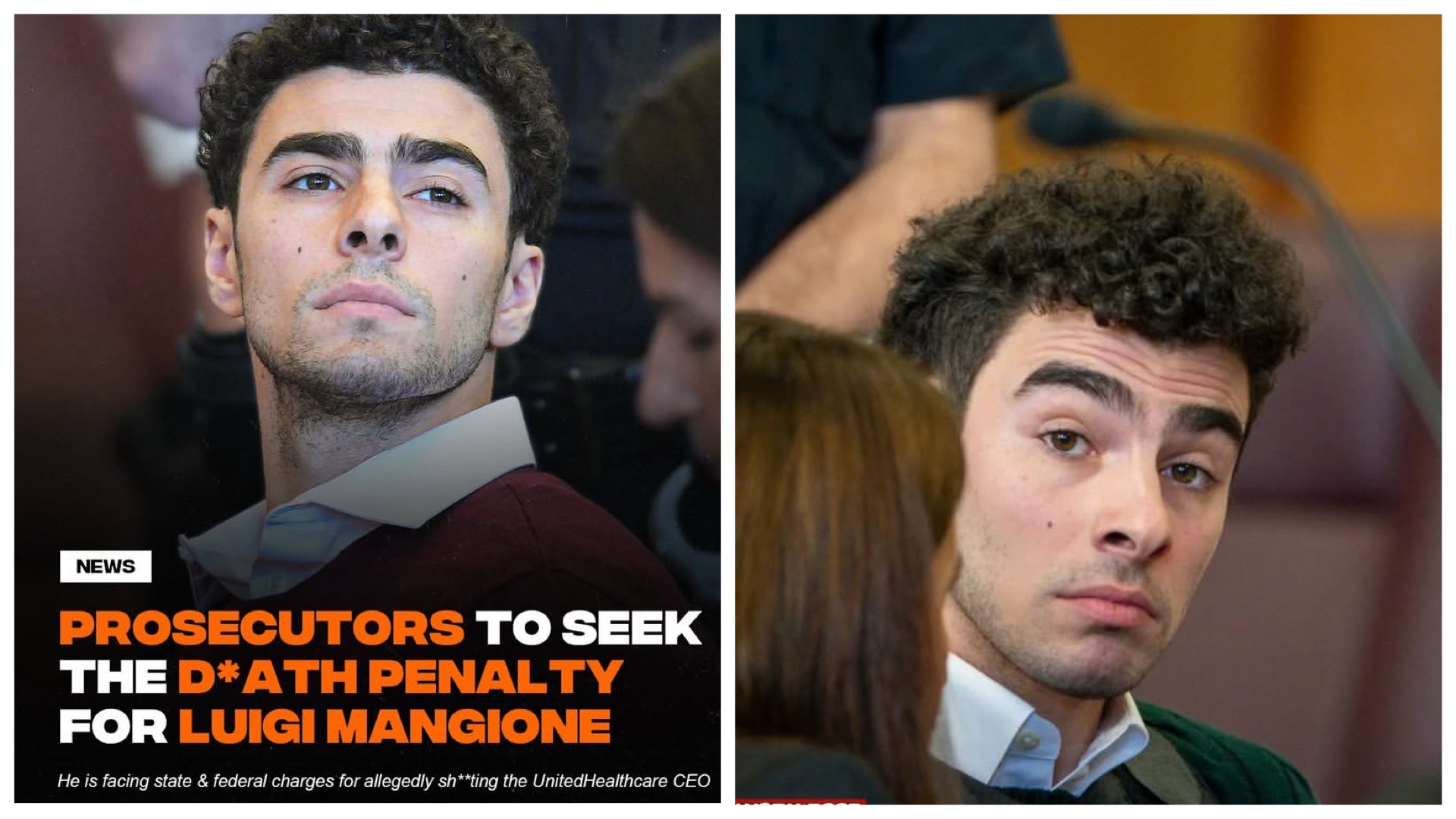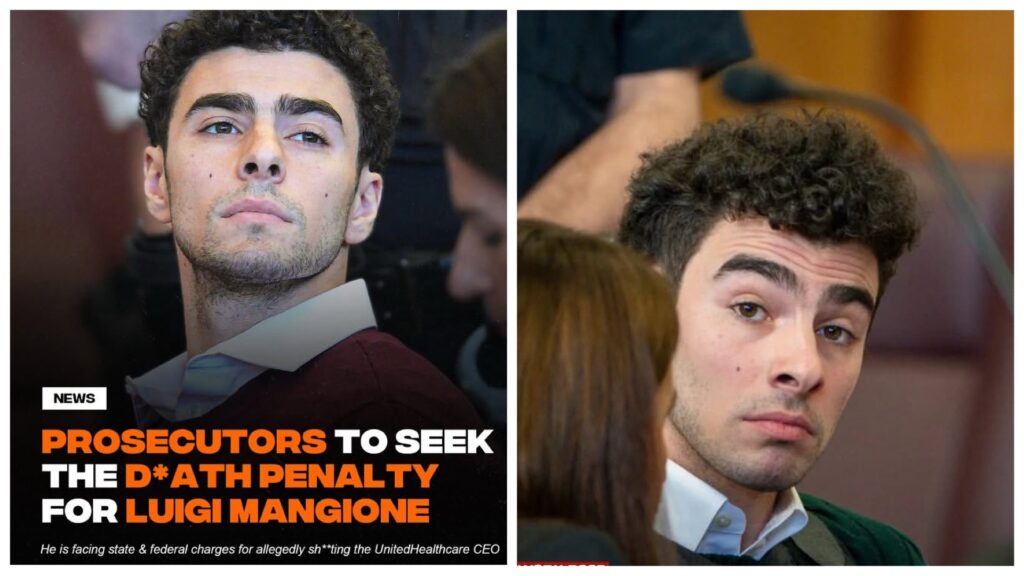CELEBRITY
Federal Execution or Freedom? Luigi Mangione’s Fate Hangs in the Balance as Supporters and Prosecutors Wage War

The Luigi Mangione Case: A Murder Trial That Has America Talking
On December 4, 2024, the bustling streets of Manhattan bore witness to a shocking crime: the fatal shooting of Brian Thompson, the CEO of UnitedHealthcare, outside a hotel where the company was set to hold an investor conference. The suspect, 26-year-old Luigi Mangione, a former Ivy League engineer from a prominent Maryland real estate family, has since become the center of a legal and cultural firestorm. As of April 5, 2025, Mangione’s case has evolved into a national lightning rod, sparking debates about justice, healthcare, and the death penalty, while dividing public opinion between those who see him as a vigilante hero and those who view him as a cold-blooded killer.

The Crime and the Motive
Mangione is accused of meticulously planning and executing Thompson’s murder, allegedly stalking the healthcare executive before gunning him down in broad daylight. Shell casings found at the scene bore the words “delay,” “deny,” and “depose”—phrases critics often associate with insurance companies’ tactics to avoid paying claims. When arrested five days later at a McDonald’s in Altoona, Pennsylvania, after a massive manhunt, Mangione was reportedly carrying a handwritten manifesto railing against the healthcare industry, claiming “these parasites had it coming.” Though UnitedHealthcare has stated Mangione was never their client, his online posts about chronic back pain and frustration with the system have fueled speculation that his actions were a violent outburst against a broader corporate machine.
The case quickly transcended a typical murder investigation, tapping into widespread American discontent with the healthcare industry. Supporters have hailed Mangione as a symbol of resistance, while detractors—including elected officials—condemn the glorification of vigilantism. This duality has turned Mangione into a cult figure, with nearly $800,000 raised for his legal defense by early April 2025, managed by the “December 4 Legal Committee.”
A Legal Battle Across Jurisdictions
Mangione faces a complex web of charges across multiple jurisdictions. In New York, he has pleaded not guilty to state charges of murder and terrorism, which carry a potential life sentence without parole. In Pennsylvania, he faces additional charges of forgery and weapons offenses tied to his arrest. Federally, he is charged with interstate stalking and murder using a firearm—offenses that make him eligible for the death penalty. On April 1, 2025, U.S. Attorney General Pam Bondi announced that the Department of Justice would pursue capital punishment, aligning with President Trump’s agenda to “stop violent crime and Make America Safe Again.” This decision has intensified the stakes, thrusting Mangione’s fate into the realm of rare federal death penalty cases, with only 16 executions carried out since 1976.
Mangione’s legal team, led by attorney Karen Friedman Agnifilo, has fiercely contested the charges and the government’s approach. Agnifilo has called the death penalty push “barbaric” and “political,” accusing the DOJ of defending a “broken, immoral, and murderous healthcare industry.” She argues that Mangione is caught in a “tug-of-war” between state and federal prosecutors, with his life as the prize. The defense has also challenged procedural issues, including claims that police in Pennsylvania violated Mangione’s constitutional rights by using snacks to obtain his DNA after his arrest, and that New York authorities have delayed providing full discovery evidence, hampering his ability to prepare a defense.
A Polarized Public and a Media Circus
The Mangione case has captivated the nation, blending courtroom drama with societal outrage. His February 21, 2025, court appearance in Manhattan drew dozens of supporters, some holding placards, others donating to his defense fund. A recent episode of Law & Order even mirrored the case, reflecting its cultural resonance. Yet, this public fascination has raised concerns. Manhattan prosecutors allege that Mangione’s lawyers have “fanned the flames” of publicity, pointing to heart-shaped notes hidden in socks provided by his defense team for a court appearance, one reading, “Know there are thousands of people wishing you luck.” They also claim witnesses have faced intimidation and death threats, prompting calls to protect their identities.
Mangione’s treatment by authorities has further fueled the narrative. His dramatic “perp walk” off a helicopter, flanked by heavily armed officers and trailed by New York Mayor Eric Adams, was likened by fundraising organizer Sam Beard to treating him “like Hannibal Lecter”—a move Beard says backfired, boosting donations to over $700,000. Meanwhile, Mangione’s request for a laptop to review the “voluminous” evidence—granted by a New York Supreme Court judge on March 27, 2025, pending federal approval—has sparked disputes over his rights versus security concerns.
The Bigger Picture: Healthcare, Justice, and Morality
At its core, the Luigi Mangione case is more than a murder trial—it’s a referendum on America’s healthcare system and the lengths to which frustration can drive an individual. Mangione’s supporters see him as a martyr who exposed corporate greed, while his critics argue that his actions undermine the rule of law. The federal pursuit of the death penalty adds another layer, reigniting debates over capital punishment’s role in a justice system where executions remain rare and controversial. Legal experts note that even if convicted, Mangione’s case could take decades to resolve, given the complexities of federal death row appeals.
As the trial looms, Mangione remains at the Metropolitan Detention Center in Brooklyn, a figure both vilified and venerated. His story has struck a chord with those who feel crushed by an unforgiving system, yet it also poses uncomfortable questions: Is vengeance justice? Can one man’s rage justify another’s death? Whatever the outcome, Luigi Mangione’s case will likely linger in the national consciousness, a stark reminder of the fault lines running through America’s soul.











